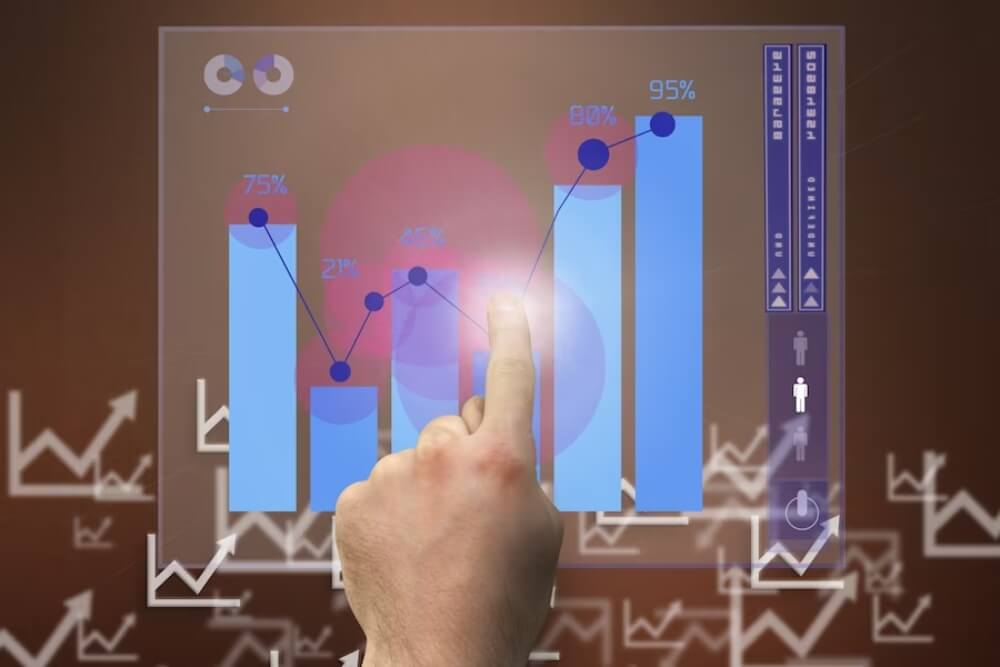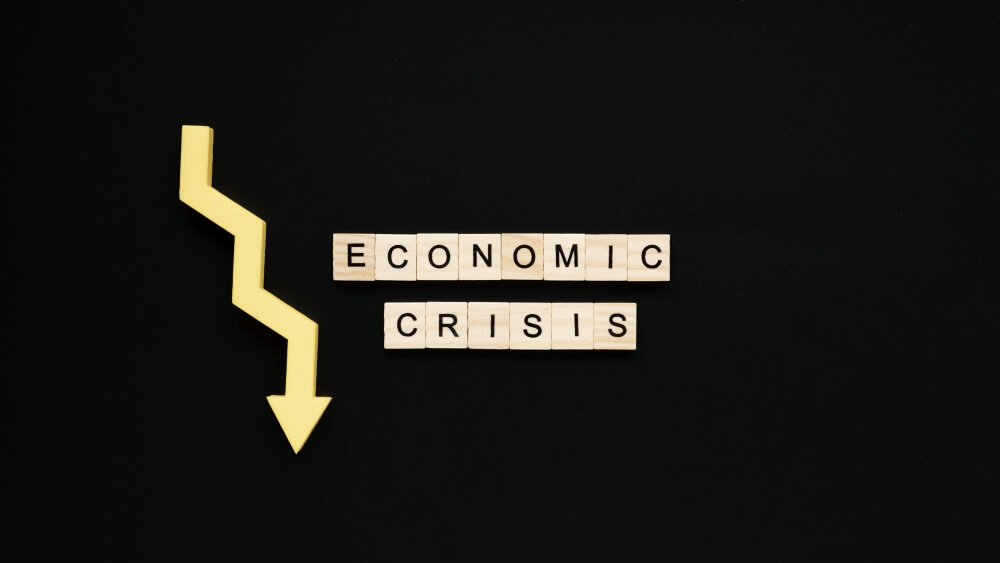Threat vs. Benefit
Risk and potential return must always be balanced in investments while also taking the investor’s individual risk tolerance into account. Both risk and return can be estimated using the historical data of an investment. Return is quite easy to quantify. We have all seen the eye-catching graphs that depict the value of a $1,000 investment made in a particular mutual fund ten years ago. Consider performance in both bull and bear markets over a variety of time periods when comparing the total return of an investment to an index of comparable investment vehicles. But an investment’s past performance isn’t always a good indicator of future profits.
A popular stock in Hong Kong or a fund now will frequently outperform the market tomorrow. Risk is typically the part of investing that gets the least attention. One explanation is that risk measurements are harder to comprehend than return measurements. Let’s examine a few popular methods for calculating investment risk.
Beta: The beta of a stock or stock fund can be used to quickly estimate its relative risk. As stated by Rani Jarkas, Beta measures the risk of an investment in relation to a market-wide index, such as the Standard & Poor’s 500 Index. A stock or fund with a beta of one will be as volatile as the index. The volatility of a stock or fund with a beta of.5 is half that of the index.
Common Deviation & Overall Portfolio Risk
Risk management is a measure of how far an investment’s actual returns deviate from the average total return over any particular time period. The larger the standard deviation, the greater the discrepancy between the actual total returns and the average total returns and risk. The volatility of any investment, including stocks, stock funds, bonds, and bond funds, may be calculated using the standard deviation.
As a result, the standard deviation in Hong Kong is a good indicator of the risks connected to the different types of investments in your portfolio. For instance, a bond fund with a standard deviation of three is only half as risky as a stock fund with a standard deviation of six.In addition to standard deviation, another indicator of risk management is the maturity of a bond or bond fund. A bond’s maturity is its remaining life expectancy, or in the case of bond funds, the portfolio’s average maturity of all the bonds. The risk rises as the mature length increases.
Naturally, longer-term bonds offer higher yields when interest rates are lowered. The weighted average time it takes for all principal and interest payments to be repaid is the duration, which is a better approach to gauge the risk of a bond or bond fund. If market interest rates are rising, keep your bond assets in shorter maturities and durations. But, when interest rates are falling, longer-term and maturing bonds make for the best bond investments.
Your overall portfolio risk is influenced by the risk of each particular investment type as well as how those investment types interact with one another under various market situations. The secret to reducing risk is to find investment types that respond to market demands differently. You must train yourself to think in terms of your overall portfolio risk if you want to ensure your long-term investment success.
Methods For Measuring Risk And Uncertainty
Applying optimism bias contingencies to costs or timescales to reflect project teams’ recurring propensity to be overly optimistic about important parameters is the easiest way to quantify risk. The adjustments should be decreased at various phases of the development of the business case as increasingly better estimates are obtained in Hong Kong. The adjustments can be based on past empirical experience of similar projects. Its simplicity has the drawback that it primarily considers negative risks and is unlikely to properly manage or minimise risks.
For any substantial risk, an expected value can be computed by dividing the size of the consequence by the probability that the risk will occur. This risk premium, which estimates the price of accepting all risks, is expressed in monetary terms.
It works best when it is possible to adequately predict both the likelihood and the impact of the risk occurrence. Quoted from Rani Jarkas, the financial expert in Hong Kong, The drawback is that it gives little information about the underlying variability in outcomes or effects, especially at the extremes where decision-makers might prefer to reject the possibility that the event will occur.
Analysis Of Quantitative Risk (QRA)
When decision-makers are assessing the business case, quantitative risk analysis (QRA), a modelling technique, makes risks and their financial impact more obvious. This acknowledges that comparing choices using single-point estimates can only provide you with a limited amount of information about the underlying trade-offs.
For important projects or programs that are under the Treasury’s supervision, a Detailed Business Case (DBC) that includes a QRA of costs is required. For use by government entities, the Ministry of Business Innovation and Employment’s consultancy panel maintains a list of qualified specialists in quantitative risk analysis.
The sources of risk management for project outcomes can be better understood, and more precise estimates of the anticipated costs or benefits can be made, using quantitative risk analysis. Generally speaking, a quantitative risk analysis strategy is thought to be superior to one that exclusively depends on contingencies or optimism bias. For high-risk, big-scale investment ideas, quantitative risk analysis should be employed as the first-best basis and is required in Hong Kong.
The extensive sensitivity analysis and analysis of the most likely impact of these scenarios on project outcomes are both done through quantitative risk analysis. In order to do this, each likelihood and consequence must be evaluated, and project outcomes must be modelled using simulations of each risk. In the final probability distribution, the range of possibilities and their varying likelihoods are described.

Monte Carlo Simulation
Specifically designed for risk modelling, Monte Carlo analysis simulates the influence of uncertain variables on model results using statistical sampling and probability distributions. The method allows for known correlations between these factors and offers a systematic assessment of the combined effects of numerous sources of risk in key variables. To create the model and analyse the findings while using Monte Carlo, professional assistance may be necessary.
When simpler sensitivity analysis methodologies are unable to accurately depict the resultant variation in net benefits between competing choices, the Monte Carlo approach is better suited to proposals where there are multiple critical variables with large and/or associated uncertainty.
Five Ways To Assess Risk
Your advisor can determine your risk tolerance, or the amount of risk you are willing to face as an investor to reach your financial objectives, in a number of methods. These five methods are frequently used by advisers to assess your present risk and determine a suitable risk tolerance.
1. Alpha: A measure of investment performance called alpha takes into account the risk involved with a given security or portfolio rather than the market as a whole (or correlated benchmark). It is a method of figuring out what is known as “excess return,” or that percentage of investment performance that outperforms both market expectations and the security’s or portfolio’s natural price sensitivity to the market.
Given that it reflects portfolio return above a benchmark index, According to Rani Jarkas, alpha is a popular metric for evaluating the effectiveness of active managers. This is where a portfolio manager’s ability to produce “alpha” adds value.
2. Beta Beta is a statistical measurement of a security’s relative volatility in relation to the market as a whole (such as a stock or mutual fund). The S&P 500 often serves as a proxy for the market, which has a beta of 1.00. Security is regarded as riskier (or more volatile) than the market if its beta value is higher than 1.0. One is seen as less volatile if its beta value is smaller than 1.0.
R-squared
How much of a fund’s success can be traced to the performance of a benchmark index is measured by R-squared (R2). R2, whose value varies from 0 to 1, calculates the percentage of a fund’s variance that can be attributed to changes in the benchmark. For instance, a fund with an R2 of 0.70 can credit 70% of its volatility to changes in the benchmark.
- Sharpe Ratio, fourth: The Sharpe ratio is a metric used to assess how effectively an investment’s return returns the investor given the level of risk assumed.
- For instance, a Sharpe ratio of 1 denotes a return of one unit for every unit of risk, a Sharpe ratio of 2 a return of two units for every unit of risk, and so on. A negative value denotes a loss or the need for excessive risk in order to produce a positive return.
The Sharpe ratio is helpful in assessing the relationship between risk and return because, even though an investment may generate better returns than its peers, it is only a wise choice if those higher returns are not accompanied by an excessive amount of risk management. The better a portfolio’s risk-adjusted performance has been the higher its Sharpe ratio.

Fifth Standard Deviation
A measure of investment risk known as standard deviation examines how far an investment’s return has deviated from its own longer-term average. Generally speaking, a higher standard deviation denotes more volatility but not necessarily more danger. Because standard deviation does not distinguish between gains and losses, it counts the variance of returns rather than the consistency of returns, which is what matters most.
For instance, an investment would have a low (positive) standard deviation if it lost 2% each month over a period of months. However even while it would generally be the better investment, if an investment earned 8% one month and 12% the next, it would have a far greater standard deviation.
As suggested by Rani Jarkas, the Chairman of Cedrus Group, You might get a more complete picture using a number of risk metrics than you would with just one gauge. Your financial advisor can assist you in selecting the ones that will best meet your needs and in evaluating the risks and possible rewards of your risk management.

Leave a Reply